When you hear the term “JDM,” what comes to mind? For many, it’s the roar of a well-tuned engine, the curvy lines of an iconic sports car, and a culture developed around performance and innovation.
Table of Contents
At the center of this international phenomenon is a brand that has continually defined and redefined what it means to be a powerhouse within the Japanese Domestic Market: Nissan.
From the legendary Skyline to the nimble Silvia, the influence of Nissan JDM models is undeniable. They are not just cars; they are cultural icons, engineering marvels, and the dreams of enthusiasts around the globe.
But what is it about Nissan JDM vehicles that enables them to maintain such a dedicated following and a dominant position in the market? It’s a combination of revolutionary engineering, a deep motorsport pedigree, and a community ethic that is unmatched, which most brands cannot replicate.
In this deep dive, we’ll examine seven burning reasons for Nissan’s unrivalled JDM dominance. We will discover the history, the technology used, and the cultural impact that makes this brand a titan of the automotive world.
Prepare to see why the Nissan JDM legacy is not just about speed, but about a passion that connects generations of drivers.
The Legendary Godzilla The GT-R Legacy on High
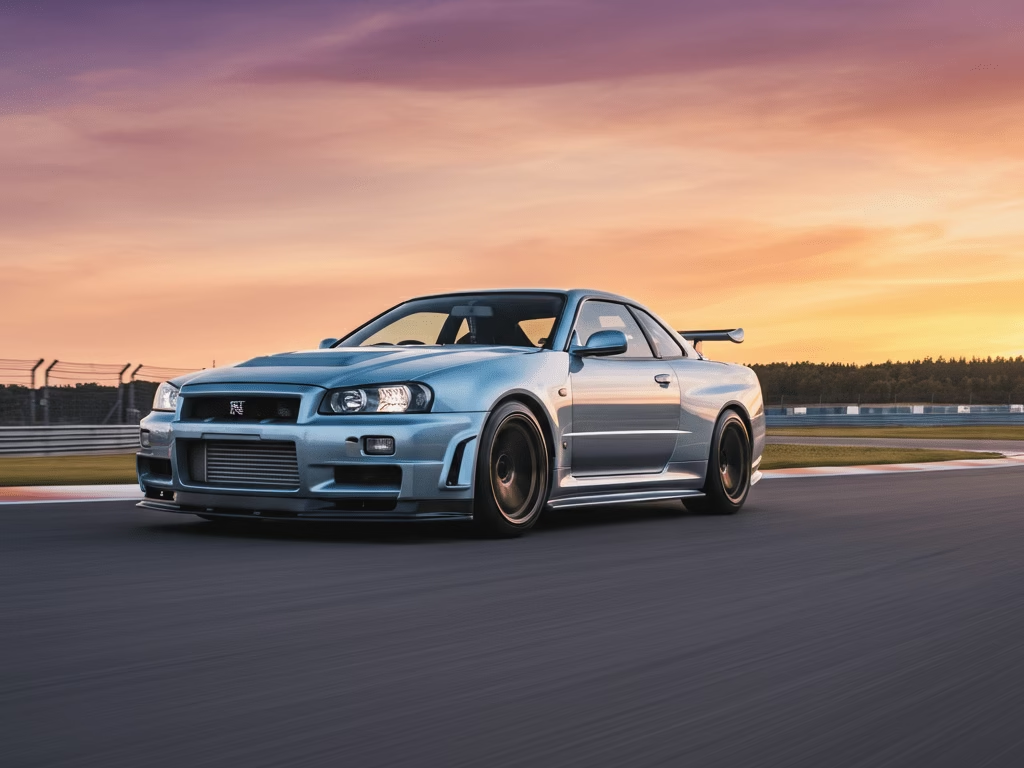
You can’t discuss Nissan JDM dominance without starting with the icon, the legend, the “Godzilla” itself: the Skyline GT-R. This isn’t a car, though; it’s a dynasty.
The GT-R nameplate is a culmination of Nissan’s engineering genius and a beast on the track, so renowned that it earned its monstrous name after outperforming its competition.
The story starts well before the models that stormed American shores, well-rooted in the motorsport history of Japan.
The Hakosuka (KPGC10) and Kenmeri (KPGC110) GT-Rs of the late 1960s and early 1970s laid the foundation and set the standard for high-performance six-cylinder and track-focused design. But it was the R32 Skyline GT-R that was unleashed in 1989 that changed everything.
This one Nissan JDM masterpiece was designed for one purpose and one purpose alone: to dominate Group A racing. And dominate it did. Complimented by these technologies were two that are now synonymous with the GT-R name:
- The RB26DETT Engine: With a displacement of 2.6 liters and twin turbochargers, this was an inline-six engine to be reckoned with. Officially rated at 276 horsepower because of the Japanese gentleman’s agreement, its true potential was much higher.
The solid iron block made it tuner’s dream that it was able to cope with massive power changes. This engine is a core piece of the Nissan JDM puzzle.
- The ATTESA E-TS System, the Advanced Total Traction Engineering System for All-Terrain Electronic Torque Split, was a revolutionary all-wheel-drive system.
Unlike a traditional AWD, it was fast-acting, mainly as a rear-wheel-drive system for agile handling, but was capable of instantaneously sending up to 50% of the power to the front wheels when slip was detected. This provided the R32 with an unrivalled grip and cornering ability.
The R32’s success was absolute. It won every race it entered (29) in the Japanese Touring Car Championship, and because there was no other car that could compete before the series started to die.
This supremacy on track cemented the GT-R’s legendary status. The legacy of the R32 followed in the form of the R33, built on the same formula, formerly marketed as the ZR (41), which was re-engineered to become a global icon by the R34, making its way into popular culture, such as the Fast & Furious film franchise.
The R34 is arguably the most recognized Nissan JDM vehicle for an entire generation of fans. The history of the GT-R is a testament to Nissan’s dedication to stretching performance limits, producing a halo car with a long, dark, dark shadow that reaches forward into the entire market.
The Tuner’s Dream: Unmatched Modifiability
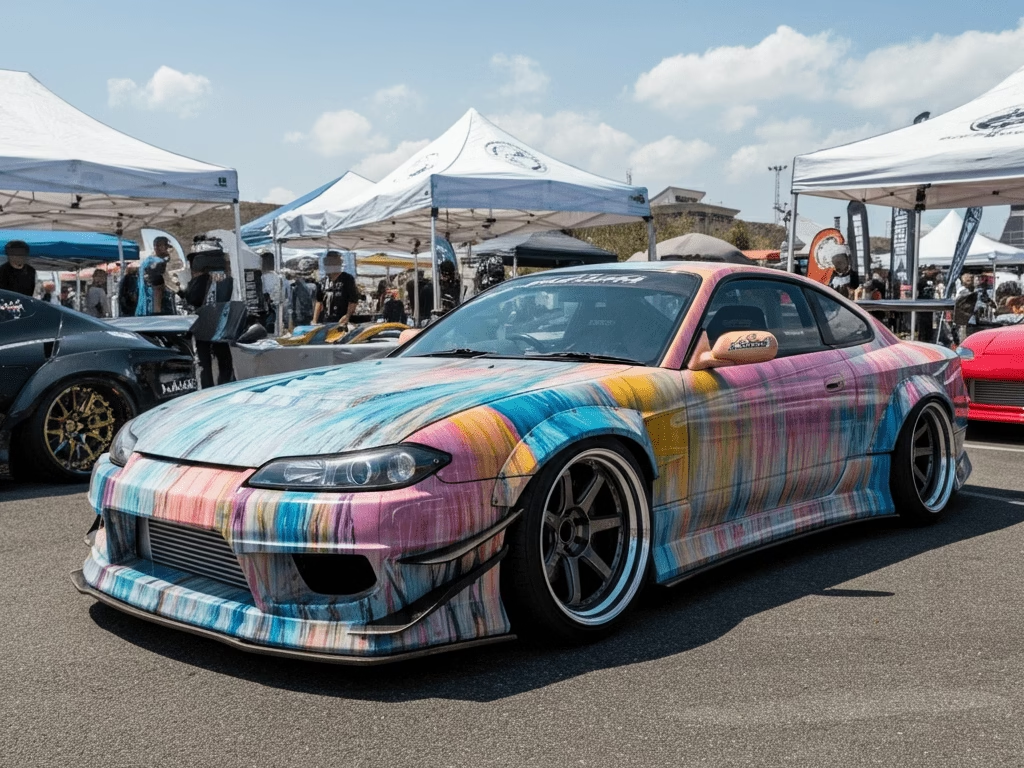
One of the most significant reasons for the enduring popularity of Nissan JDM cars is their incredible potential for modification.
Nissan engineers created platforms that serve as a blank canvas, making them practically open, ideal for tuners and enthusiasts, whether intentionally or not.
This “tuner-friendly” philosophy is embedded in the DNA of models such as the Silvia, 240SX, and, of course, the Skyline. The aftermarket support for these vehicles is a colossal and near never-ending supply of parts to make them more awesome, pretty, and better.
The Platform Silvia (including the S13, S14, and S15 generations) is a prime example. Known for its light, rear-wheel-drive set-up, it became the quintessential drift car.
The SR20DET engine is a turbocharged 2.0-liter four-cylinder engine that is robust, reliable, and responds exceptionally well to tuning.
You can walk into any drift event today, anywhere in the world, and you are guaranteed to see a fleet of Silvias, each one modified to the owner’s unique specifications.
This adaptability is a key driver of the Nissan JDM community.
Here’s what makes these cars so simple to formulate and change:
- Engine Durability: Engines such as the RB series, SR20, and VG/VQ series were over-engineered from the factory. Their strong internal components allow them to withstand significant increases in boost and power without catastrophic failure.
- Simple Mechanics: Compared to many modern performance cars, older models of the Nissan JDM have relatively simple mechanical and electronic systems. With this configuration, they become accessible to home mechanics for learning and to professional tuners for disassembly and rebuilding.
- Vast Aftermarket Flexure. The popularity of these cars, in turn, spurred on a self-sustaining ecosystem. Companies from HKS and GReddy to lesser-known shops of component manufacturers offer a range of products, including turbo kits, suspension components, widebody kits, and interior upgrades. This means you can build a Nissan JDM car for any purpose: drag, drift, grip, or show.
This culture of modification keeps the cars relevant decades later, after they rolled off the production line. A 30-year-old Nissan 300ZX (Z32) can be built to the specifications of far more modern performance sports cars for a fraction of the cost.
This accessibility and potential for personalization are powerful forces that keep the Nissan JDM scene vibrant and dominant. It’s a brand that empowers the users who own the product to be creators and not only consumers.
A Lemma of Speedway Domination
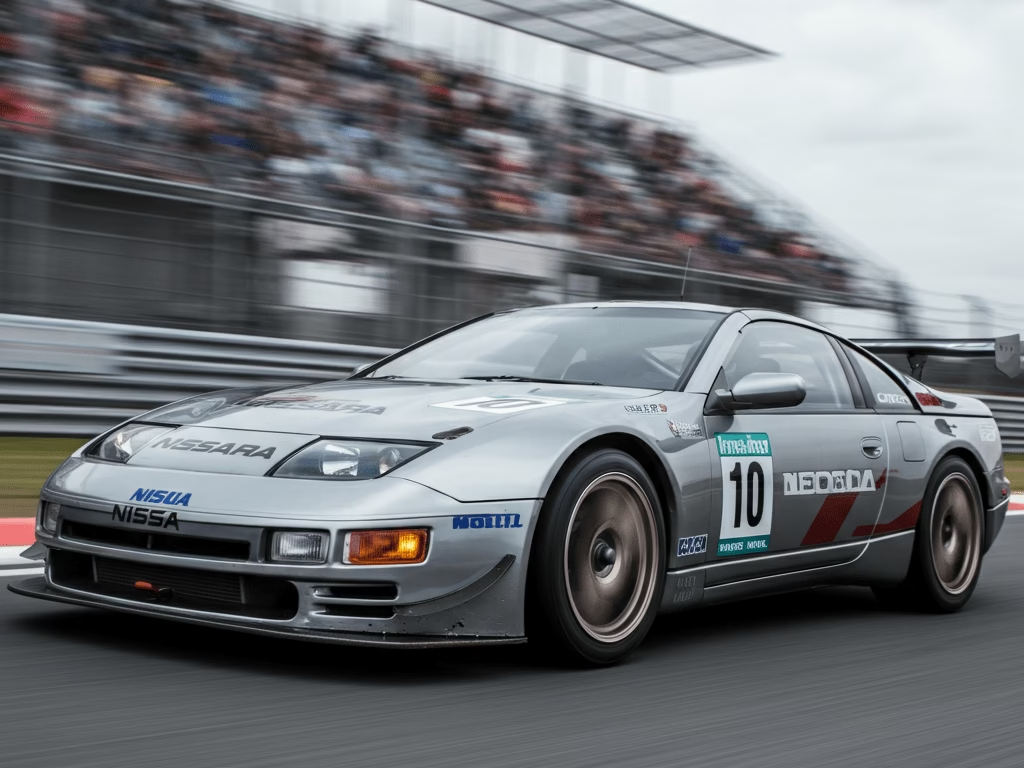
Nissan’s identity is forged in the fires of motorsport. Long before “JDM” became a household acronym, Nissan was proving its engineering mettle on race tracks around the globe.
This racing heritage isn’t merely for marketing purposes; it’s the very foundation of the racing on which their greatest performance cars were built.
The lessons learned and technologies developed during the heat of competition trickled down to become the production models that enthusiasts cherish.
This authentic connection between the track and the street is a cornerstone of the Nissan JDM appeal.
The brand’s racing history is widely varied and storied. From the grueling East African Safari Rally, which the Datsun 240Z conquered in the early 1970s, to the 24 Hours of Le Mans, featuring high-tech race cars, it has always raced at the highest of high levels.
The commitment to racing has had a direct and tangible effect on their road cars.
Let’s take a look at the following examples:
- IMSA Racing and 300ZX The Nissan 300ZX Twin Turbo (Z32): was the dominant force in the IMSA GT series in the surrounding area of the 1990s. The race-prepped Z32s were so successful, winning championships and the 24 Hours of Daytona, that eventually they were disabled and then banned altogether by regulations. This racing success amplified the car’s reputation, making the road-going Z32 a highly desirable Nissan JDM icon.
- Japanese Grand Touring Championship (JGTC/Super GT): This is where the Nissan JDM racing legend is most potent. The Skyline GT-R (R32, R33, R34), as well as later the Z and modern GT-R (R35), have been mainstays and frequent champions of Japan’s top racing series. The iconic blue Calsonic and menacing black Pennzoil GT-Rs became a legend, and their success was translated straight into sales and brand loyalty. Fans could see their heroes win on Sunday, in a GT-R, and buy a street version on Monday.
- The Birth of NISMO: Seeing their motorsport division has the power, Nissan established NISMO (Nissan Motorsport International Limited) in 1984. NISMO became the official in-house tuning and performance arm, where they made limited edition and track-focused models of popular cars. A NISMO badge on a Nissan JDM car, like the 400R or the Z-Tune GT-R, signifies the ultimate expression of Nissan’s racing DNA.
This rich motorsport pedigree lends Nissan JDM cars a legitimacy that many rivals cannot replicate. They aren’t merely styled to look fast, but born out of a family of vehicles that have proven their mettle where it matters most. Owning a Nissan performance car is owning a part of that racing history.
The power of Cultural Impact and Media Presence
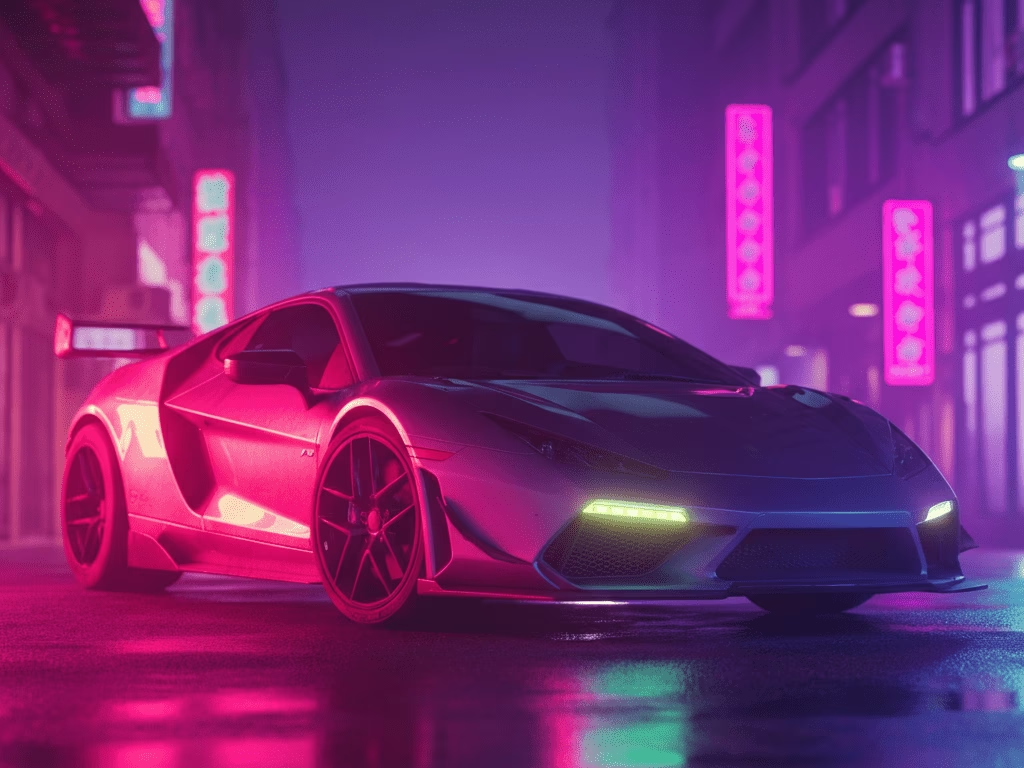
Performance and engineering are not all of the equation. A brand’s dominance is also measured by its cultural footprint, and in this arena, Nissan JDM is a giant.
Through strategic placement and organic adoption in movies, video games, and anime, Nissan’s cars have been lodged in the consciousness of a global generation.
This media exposure turned vehicles such as the Skyline and Silvia from unknown market cars into worldwide objects of desire.
The most important cultural potential influence was the Fast & Furious movie franchise.
The character of Brian O’Conner, introduced by the late Paul Walker, famously drove a series of Nissan Skylines beginning with the iconic blue R34 GT-R in 2 Fast 2 Furious.
This movie has single-handedly brought the R34 to millions of people outside of Japan and made it an icon, known as the Holy Grail of the JDM cars
The car wasn’t just transportation; it was actually a character in itself, the very image of a cool and performance that was aspirational and exotic.
Video games played no less important a role.
- Gran Turismo: The “Real Driving Simulator” for the PlayStation delicately re-created hundreds of cars with a heavy emphasis on JDM models. For many, this was their first opportunity to “drive” a Skyline GT-R, a Silvia K’s, or Fairlady Z. The game’s detailed specs and realistic handling educated a generation on the nuances of Nissan JDM performance.
- Need for Speed: This arcade racing series focused on car culture and customization, allowing players to personalize the appearance of their virtual Nissan JDM rides with body kits, spoilers, and various performance upgrades, reflecting real-life tuner culture.
This existence spread to Japanese media as well. The anime and manga series Initial D, based on the Japanese street racing scene and drifting lifestyle, featured the Jenny Silvia S13 extensively, making it one of the drift community’s legendary cars.
These media appearances became a strong feedback mechanism, such that they stimulated interest in the cars to the point where the aftermarket and tuner scene would feed into the cars becoming more interesting for another media feature.
This cultural resonance is a unique and powerful advantage that keeps the Nissan JDM legend alive and well.
The “S-Chassis” A Masterless in Balance and Inexpensive
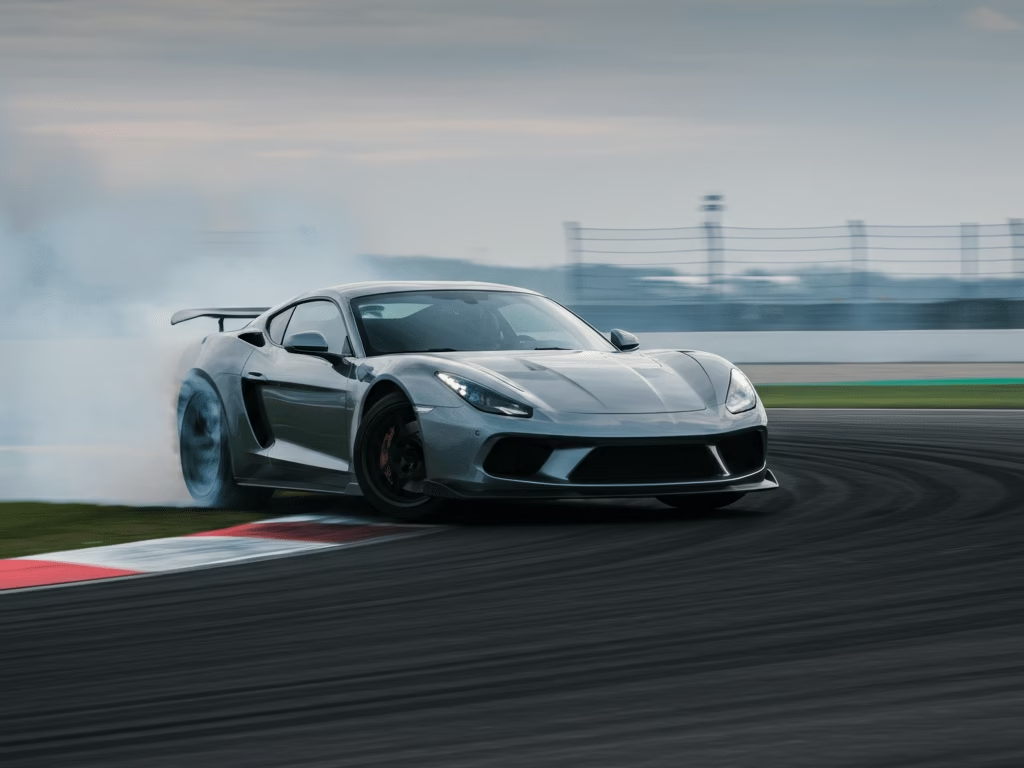
While the GT-R holds the crown as the king of Nissan JDM, the S-Chassis holds the title of the people’s champion. The S-Chassis is the platform on which the Nissan Silvia and its export counterparts, the 180SX, 200SX, and 240SX, are based.
These cars stand as a different type of dominance, for it is not through sheer overwhelming power that they dominated, but through absolute balance, affordability, and accessibility. The S-Chassis is downright the most critical platform in the history of drifting.
What is it that made the S-Chassis so special? It was a simple but genius formula: a light body, a front engine/rear wheel drive, and the near-perfect 50/50 weight ratio.
This combination produced a vehicle with incredibly nimble and predictable handling characteristics. While the GT-R employed a sophisticated yet complex technology to adhere to the road, the S-Chassis was designed to dance.
It was easy to start and control a slide, making it the ideal learning tool for aspiring drifters.
No aspect can be overstated more than the affordability factor. When these cars were new and afterward in the used market, they were affordable to buy and service.
This low barrier to entry gave the world of performance driving to a far wider audience. A young enthusiast could purchase a used Nissan 240SX, learn to work on it themselves, and take it to a local track day or drift event, without breaking the bank.
The key generations of this iconic Nissan JDM platform include:
- S13 (1989 – 1998): Alternatively available in coupe, fastback (180SX in Japan), and even as a rare convertible. Its pop-up headlights and ’90s styling make it a fan favourite.
- S14 (1994 – 2000): A slightly larger and more rounded design. The later models are called the “Kouki” and feature a more aggressive front-end body styling, making them particularly coveted.
- S15 (2000-2002): The last fully defined and improved version (sold only in Japan, Australia, and New Zealand). Its sharp lines, 6-speed manual transmission, and helical limited-slip made it the ultimate factory S-Chassis.
The S-Chassis built a global society. It democratized motorsport, especially drifting, and still feels the influence of today’s age.
The so-called “drift tax”, in simple words, the drastic price hike of S-Chassis cars in the second-hand market, is the result of their popularity and legendary glory.
This platform is a testament to the concept that a great sports car is not all about horsepower; it’s about the seamless connection between the driver and the machine.
The Long-Lasting Legacy of the Fairlady Z
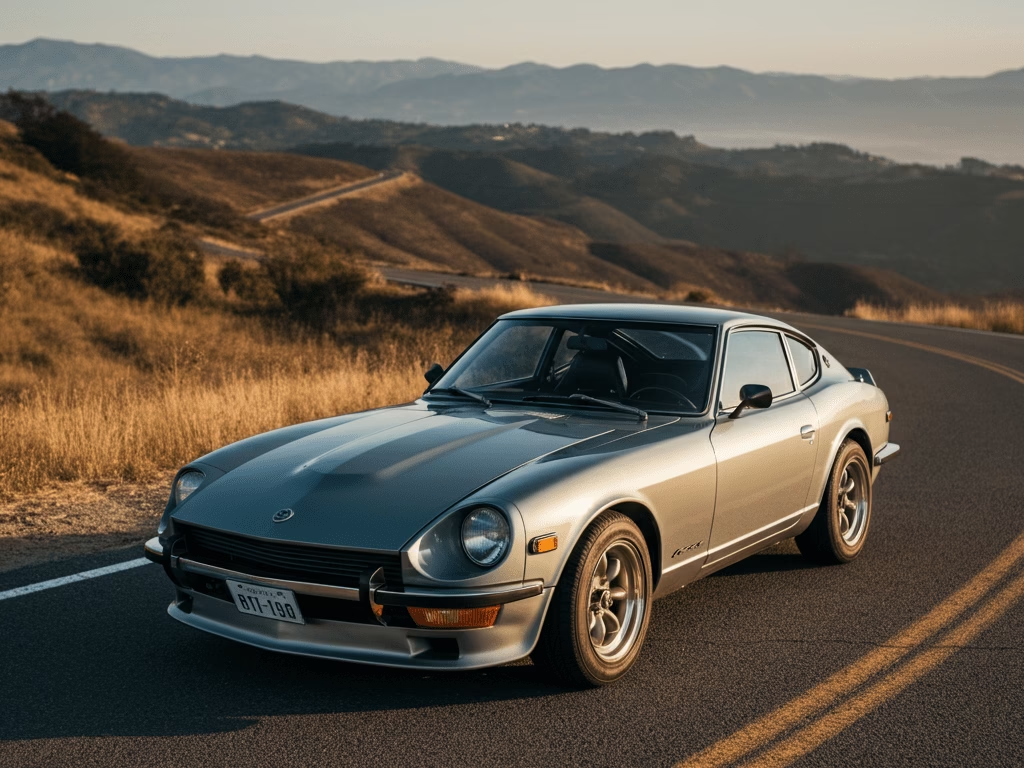
Long before the Skyline GT-R became a global icon, another Nissan JDM sports car was capturing the hearts and minds of enthusiasts worldwide: the Fairlady Z.
Known as the Datsun 240Z in export markets, the original S30 Z-car, launched in 1969, was a revelation. It had the style and performance of a European GT car, such as a Jaguar E-Type, but was priced in a range that the average man could afford.
It was beautiful, reliable, and fun to drive, and it singlehandedly changed the image of Japanese automakers.
The Z car’s history is one of constant evolution, where it has adapted to the times, while remaining true to its core design in terms of being a two-seater, front-engine, rear-wheel-drive sports car.
Each generation brought something new to the table, which was proportional to the technological and design trends of their era.
- S30 (240Z, 260Z, 280Z): The original that started the whole thing. It is timeless in its long hood, short deck, and smooth lines. It proved that a Nissan JDM car could be both beautiful and a formidable performer.
- S130 (280ZX): This generation was a move towards creating the feel of a Grand Tourer, incorporating more comfortable and luxurious features, while not forgetting its sporty soul.
- Z31 (300ZX): The first Z to feature a V6 engine, adopting the sharp, angular design language of the 1980s. The turbocharged ones provided serious performance for the times.
- Z32 (300ZX Twin Turbo): A technological tour de force when it was introduced in the 1990s. With its twin-turbo V6, Super HICAS four-wheel steering, and CAD-designed body, it was one of the most advanced cars of its day and a true Nissan JDM supercar.
- Z33 (350Z): In 2002, Nissan resurrected the Z after a short break. The 350Z was about keeping it simple, offering raw performance, a sexy VQ-series V6 engine, and an affordable price. It was an instant hit and gave the Z brand new life with a new generation.
- The Z34 (370Z) and the new Z (RZ34): Ultimately, these models continued to optimize the formula by incorporating more power and technology while maintaining the classic proportions of a Z-car.
The Fairlady Z has been a constant in the Nissan JDM lineup for over five decades. It symbolises the brand’s commitment to a pure sports car feeling.
While the GT-R is driven by the pursuit of ultimate performance (with all its major technological trappings), the Z customarily has been about the stock-in-trade experience of driving.
Its prolonged duration and unending functionality in bringing stylish performance at a competitive price tag are a giant pillar behind Nissan’s dominance in the market.
A Forward Thinking Approach to Performance
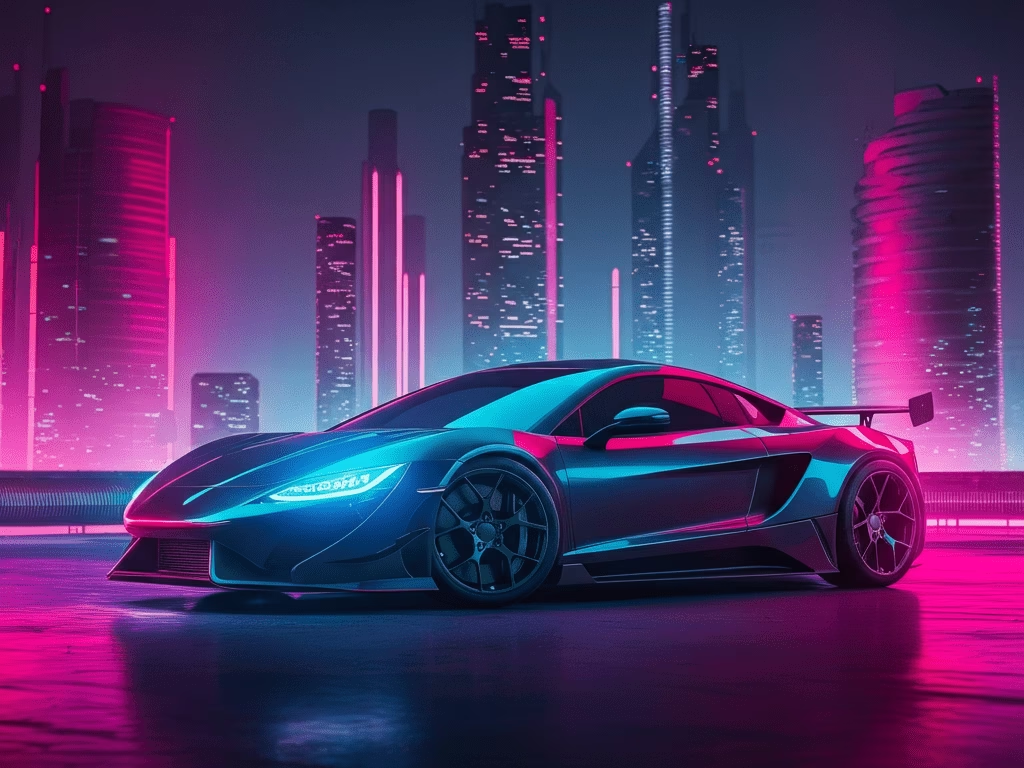
While the heritage of classic Nissan JDM models is a massive part of their appeal, Nissan’s dominance isn’t just about resting on its laurels.
The company has consistently demonstrated a forward-thinking approach, leveraging new technologies and redefining what a performance car can be.
This willingness to innovate represents a persistent brand characteristic that keeps the product exciting and relevant both now and as things continue to evolve in the automotive space.
The most well-known example of this is the R35 GT-R. When it emerged in 2007, it was a seismic shock to the supercar establishment.
Here was a Nissan JDM car that could deliver performance equal to exotics in Italy at three or four times as much.
It didn’t do this by staying in the old formula, but by rewriting the rulebook. The R35 was a weapon of the digital era, packed with high technology:
- The VR38DETT Engine: A hand-built 3.8 litre twin turbocharged V6, each one built by a single master craftsman, known as Takumi, in a clean room environment.
- Dual-Clutch Transaxle: Shifting gears in milliseconds, the transaxle, mounted to the rear, helped optimise weight distribution and provide unrelenting acceleration.
- Advanced Vehicle Dynamics Control (VDC-R): An incredibly sophisticated traction and stability control system, co-designed with the makers of Gran Turismo, allowed drivers of all states to explore the car’s immense abilities safely.
The R35 demonstrated that brutal performance could be available and accessible for everyday use. It was a supercar you could drive to the grocery store.
This philosophy of “anyone, anytime, anywhere” performance was a game-changer.
Nissan’s innovation doesn’t stop at its flagship. The brand has tinkered with some unlikely ideas, such as the gruesomely lovable and unreasonably fast Juke-R, a Nissan Juke SUV with the entire powertrain of an R35 GT-R shoehorned into it. They’ve also invested a lot of money in electric vehicle technology with the Leaf.
They are even starting to investigate how electrification can help them improve the performance of the form, as we’ve seen in the latest hybrid and EV concepts.
This forward momentum, paired with a deep respect for its own history, is a potent mix. It ensures that the Nissan JDM story is not just about the past, but also about an inspiring future.
Conclusion: More Than Metal Legacy
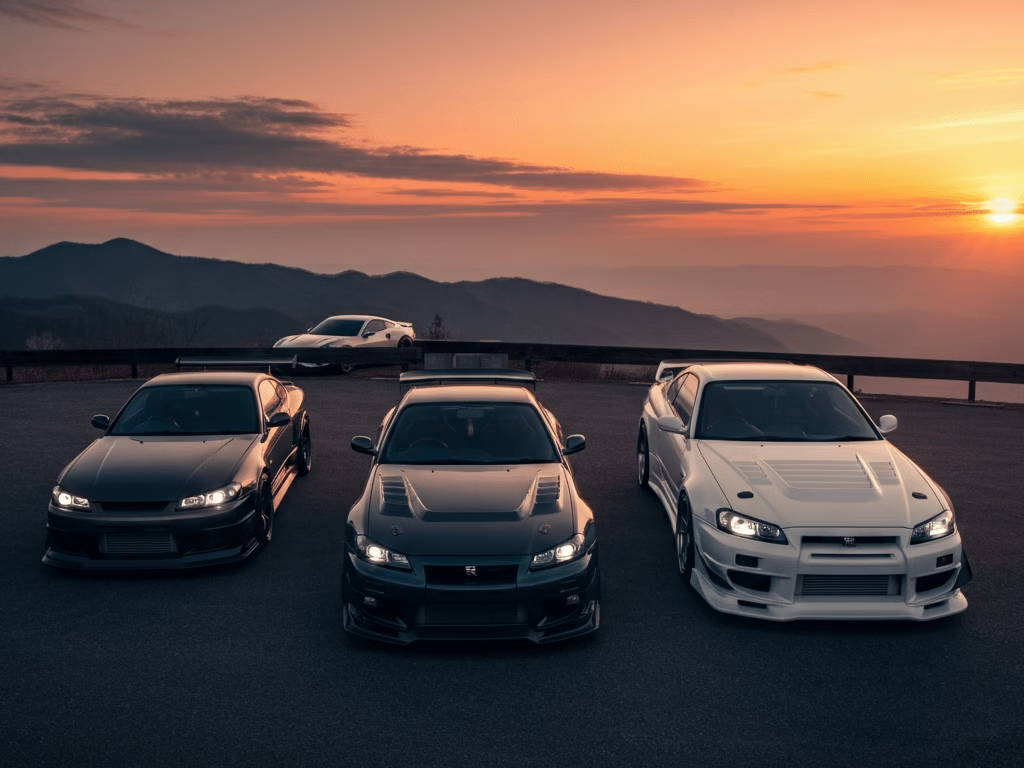
The preponderance of the Nissan JDM in the auto space is not the product of a single car or one success story.
It is a many-sided legacy, accumulated over decades, and woven from the threads of engineering ambition, motorsport glory, cultural resonance, and a deep understanding of what enthusiasts crave.
From the world-beating GT-R to the drift-happy Silvia and the implacable Fairlady Z, Nissan has consistently delivered vehicles that don’t just get you from point A to point B they set you on fire.
The strength of that brand is that it’s diverse. It offers the high-tech, all-wheel-drive monster for those with the desire to build the ultimate racing speed machine, and the balance and rear-wheel-drive canvas for those who want to express themselves through driving and customization.
This, coupled with a tuner-friendly philosophy and an invisible mark on pop culture, has led to a fiercely loyal community all around the world.
The story of Nissan JDM is a testament to the idea that when you build cars with soul, their legacy will not only endure but dominate for generations to come.
Frequently Asked Questions about Nissan JDM
What does JDM mean and why are Nissan Important?
JDM’s the Japanese Domestic Market. Nissan is key, considering that it made legendary cars such as the Skyline GT-R, Silvia and Fairlady Z.
What is the “Godzilla” of Nissan JDM?
The Skyline GT-R is nicknamed “Godzilla” by the dominance of this car in racing, and in the powerful tech.
Why Tuners love Nissan JDM Car?
Nissan JDM cars are very powerful engines, and their design is simple enough that they can be easily tuned and modified.
Which Nissan JDM car is best for drifting?
The Nissan Silvia (S13, S14, S15) is the number one choice when it comes to drifting because it’s light and balanced, and because it’s rear-wheel drive.
How did movies and games increase Nissan’s fame?
Films such as Fast and Furious and games such as Gran Turbo made cars such as the R34 Skyline GT-R famous around the world.
What’s the difference between GT-R and Fairlady Z?
The GT-R is high tech and super fast The Fairlady Z is classic, stylish and made for fun driving.
Are new Nissan cars keeping the JDM spirit alive?
Yes! The GT-R (R35) and new Nissan Z continue Nissan’s JDM legacy in a modern style with modern performance.










